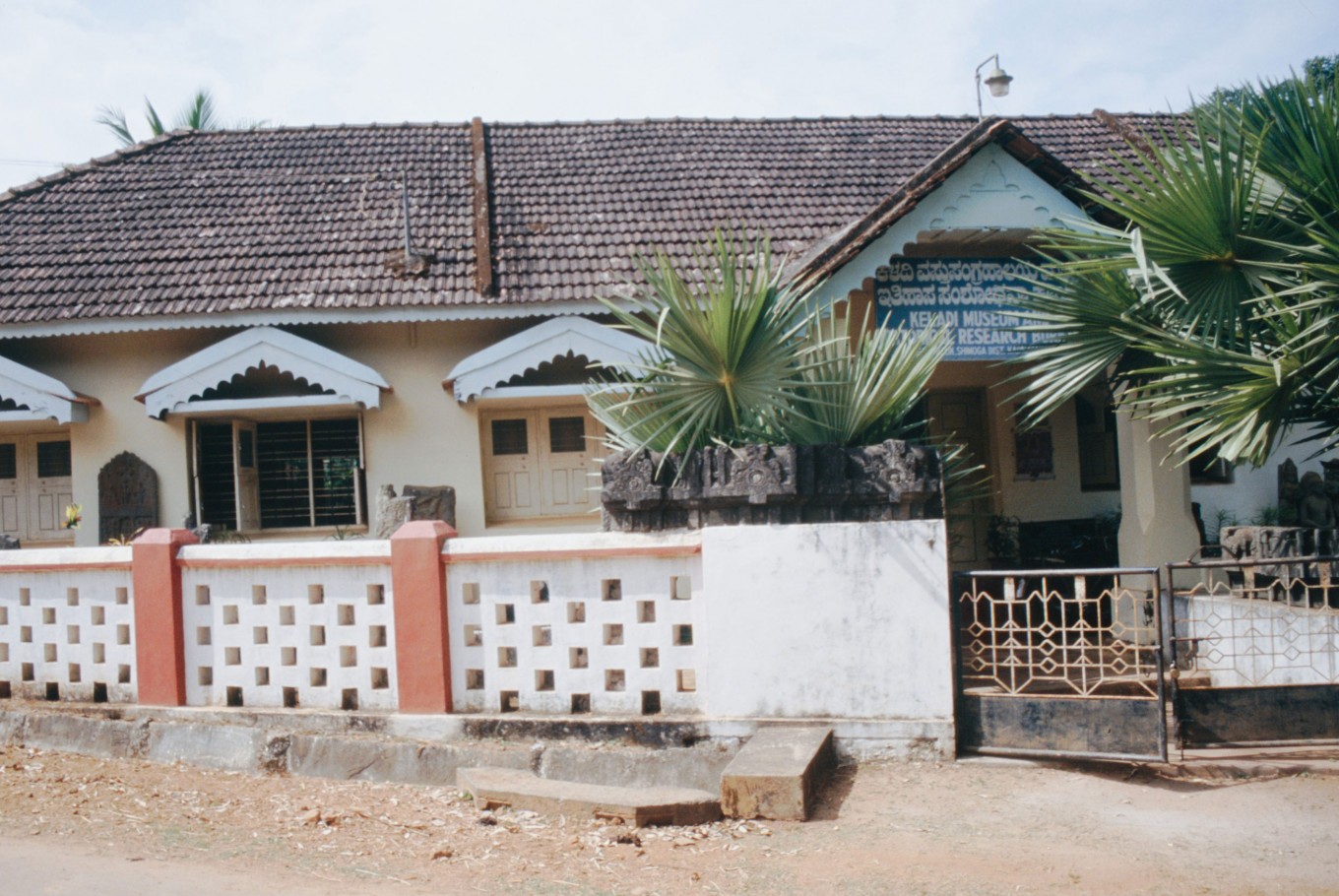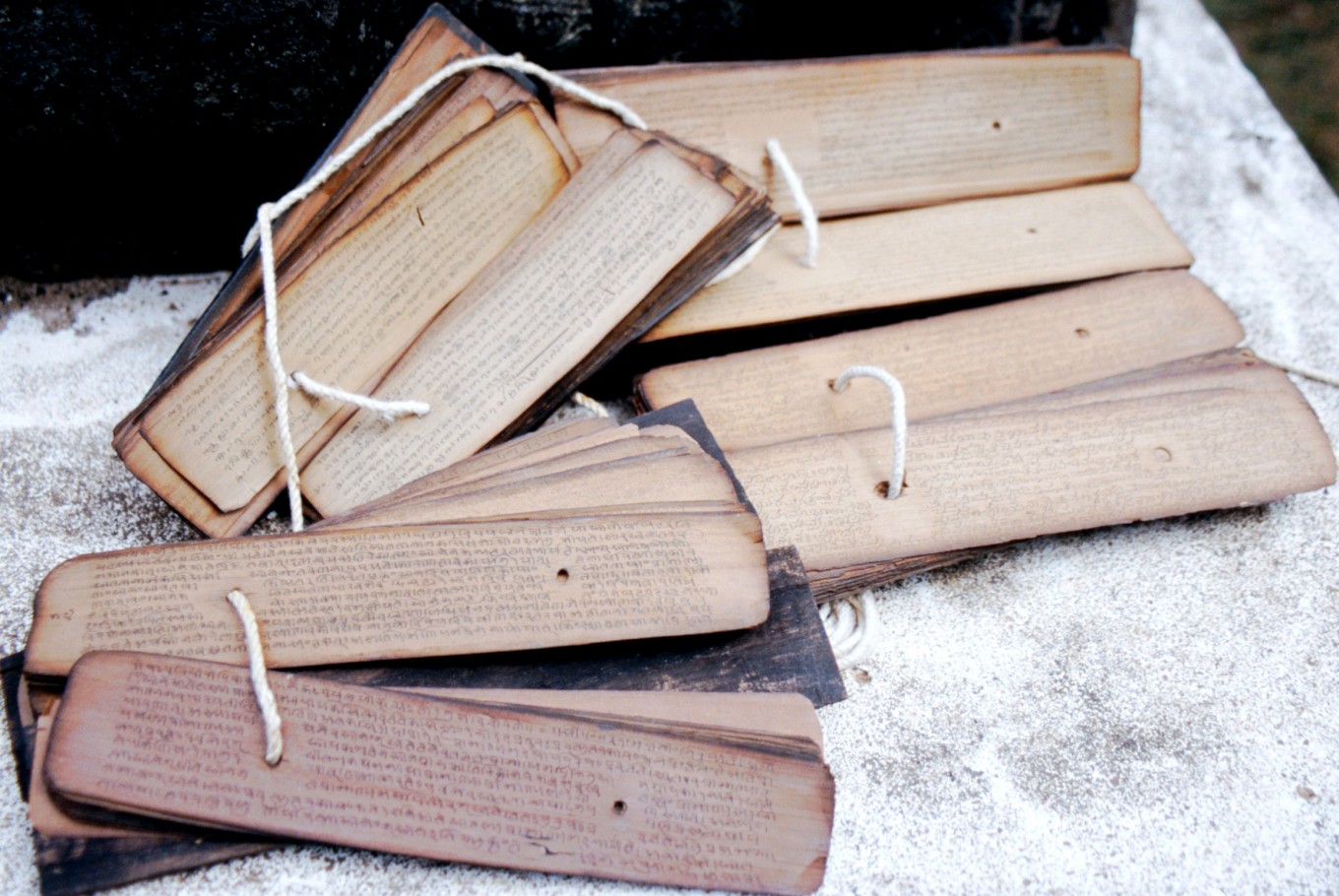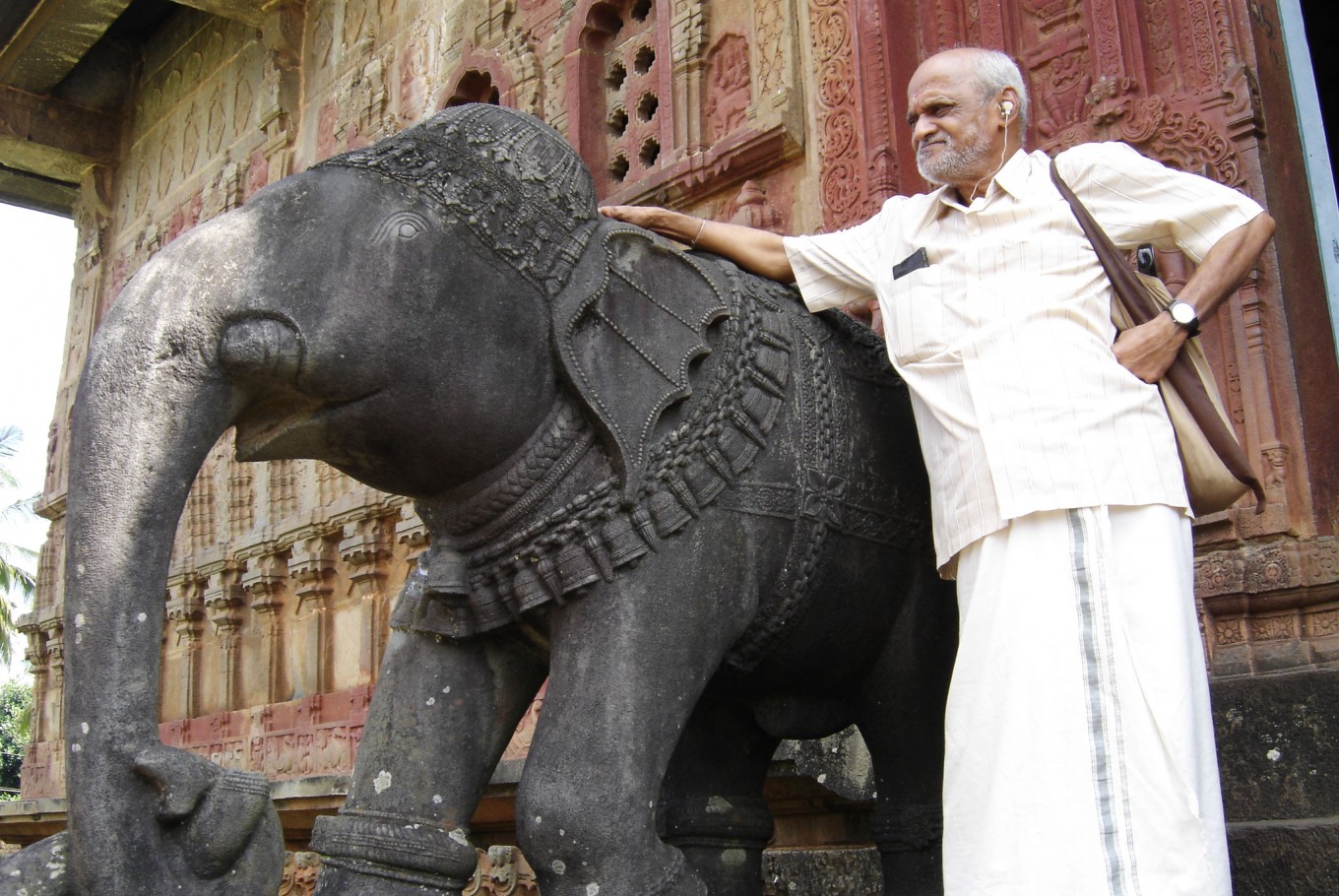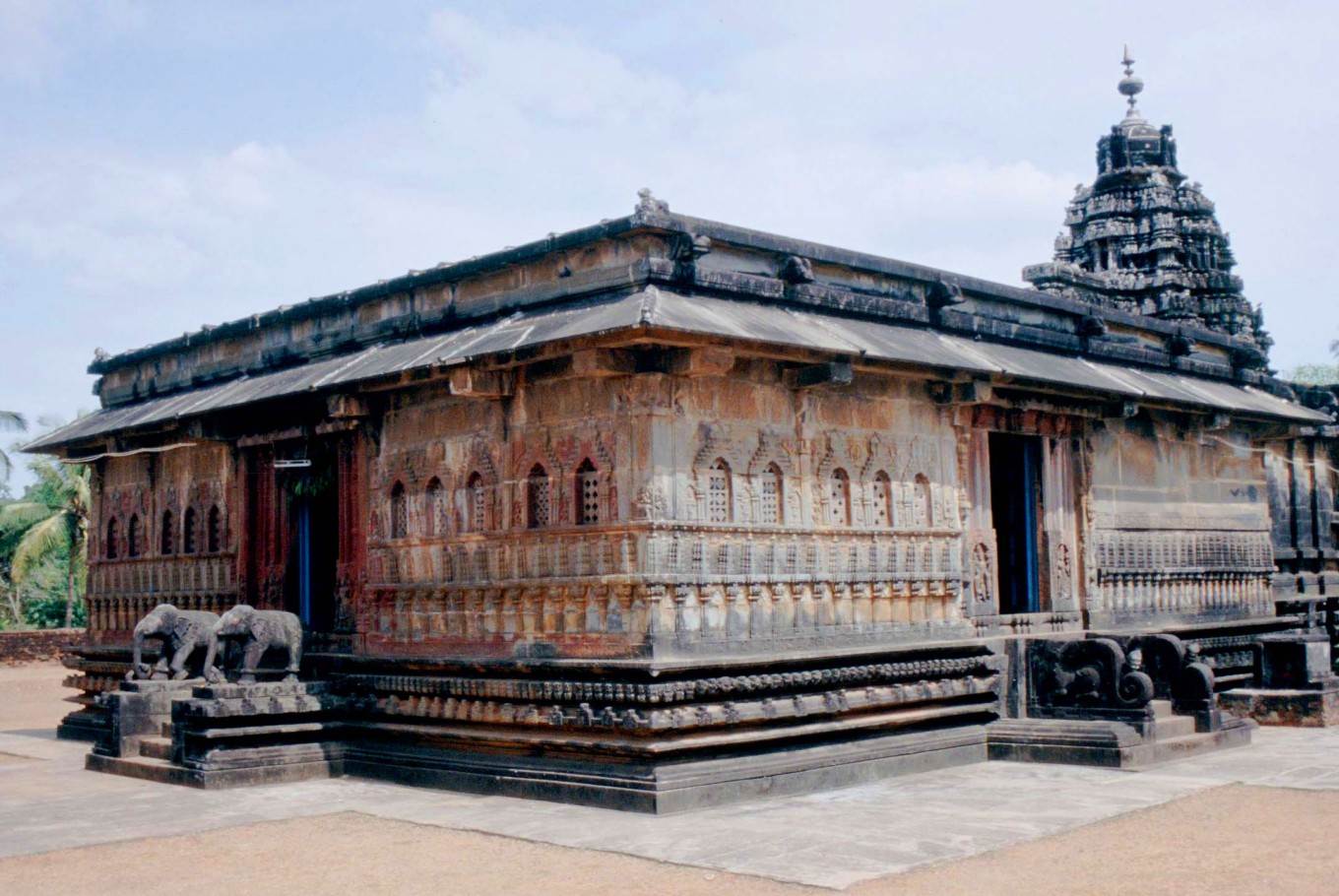Popular Reads
Top Results
Can't find what you're looking for?
View all search resultsPopular Reads
Top Results
Can't find what you're looking for?
View all search resultsExploring the grandeur of Keladi and Ikkeri
Keladi, the first capital of the then kingdom of Keladi, which stretched along the entire coast from Goa to Malabar in the Malnad area of Karnataka, is 6 kilometers to the north of Sagar.
Change text size
Gift Premium Articles
to Anyone
W
e drove four hours from Davangere in central Karnataka to Shimoga district and from there two hours to Sagar Taluk and another half an hour to Keladi, India.
A stretch of land that covered the distance that a normal person’s shout carries was what a farmer received for cultivation. This helped him take care of his land optimally, earning enough for his family’s living costs, and thus every citizen got a fair deal.
This was the standard set by Keladi rulers in the 16th century. There are many more examples related to different professions and artists. The model kingdom was later ruled by a just and brave queen who fought invaders to protect it. Keladi, the first capital of the then kingdom of Keladi, which stretched along the entire coast from Goa to Malabar in the Malnad area of Karnataka, is 6 kilometers to the north of Sagar.
At the northern end of the village, there is a large courtyard that is enclosed with a modern tiled verandah. In the middle of the courtyard stand three temples — the Rameshvara temple, which is in the center, the Veerbhadreshvara temple to the right and the Parvati temple to the left.
The Rameshvara and Veerbhadreshvara temples built in the 17th century have a mixed pattern of hoysala and southern or Dravidian style, depicting the richness of art that prevailed during the time of building. The Parvati temple is a small building that has old back portion built of stone and a modern section at the front built of brick.
(Read also: Walking down traditional Korean lanes in Jeonju)
Queen Chennamma
Keladi Chennamma, the ruler of Keladi, was a strikingly dignified lady, said our guide, who upheld the royal traditions in their entirety.
Chennamma helped the king in the administration of the kingdom and won the hearts of the people through kindness and justice. She took over the administration after her husband’s death and proved to be an intelligent and brave leader. She established a peaceful era in Keladi, in such a way that the people could live without fear of enemies, and without trouble from thieves or oppression from officers.
Our guide told us the story of how Aurangzeb the Moghul emperor had sent a huge army to capture Rajaram, son of Chatrapati Shivaji Maharaj, and to capture the Maratha kingdom. Rajaram requested protection from many kings. Afraid of Aurangzeb’s attacks, they denied him shelter. He finally disguised himself as a monk and met Keladi Chennamma to narrate his situation. Chennamma, the brave lady, gave the patriot Rajaram shelter at the cost of facing Aurangzeb’s army, which her soldiers boldly faced and later emerged victorious.
The name of Keladi's brave queen is important in the history of Karnataka and the history of India. Chennamma's life is a source of inspiration for all who love freedom and admire courage and nobility. There is a flag pillar in front of the temple within the complex. The pole has portrait carvings of Rani Chennamma and Rajaram.
 Keladi queen chennamma gave shelter to Shivaji's son Rajaram(JP/Anand and Madhura Katti)
Keladi queen chennamma gave shelter to Shivaji's son Rajaram(JP/Anand and Madhura Katti)
Ikkeri
Our next stop was Ikkeri, situated 3 kilometers to the south of Sagar. Ikkeri means "two streets". This place was the capital of Keladi Nayaks for some years. The walls of the city were significant, forming three concentric enclosures. In the citadel was a palace built of mud and timber, adorned with carvings and facades.
The only vestige of the former greatness of Ikkeri is the temple of Aghoreshwara, a large and well-proportioned stone building, constructed in a mixed style with a unique conception. It combines the best of the Hoysala and Dravidian styles of architecture and is testimony to the former importance of the place. This large stone structure has a lofty roof and ornamental doorways leading to the deity — a metal image of Aghoreshwara with three arms.
(Read also: Outdoor activities to rejuvenate yourself in Jakarta)
Aghoreshwara Temple at Ikkeri is set in serene green surroundings. The beautiful architecture of the temple, built by Keladi rulers, and its huge complex is designed geometrically with the outer walls of the temple incorporating some intricate carvings that demand a closer look. The danseuses, gods and their animal carriers here depict the lifestyle, imagination and artistic ability of the creators and their era. There is a beautiful mantapa that houses the lord’s vahana (vehicle) nandi (bull). This structure with a patterned roof standing on carved pillars is right in front of the main entrance of the temple.
 Keladi Museum(JP/Anand and Madhura Katti)
Keladi Museum(JP/Anand and Madhura Katti)
Rare, interesting museum
We were impressed to see that the museum housed in the building opposite the temple complex upholds the role of a rural museum in preserving cultural heritage. It is an interesting educational center with records and art objects that depict the lifestyle, administration, success and failure of past kingdoms.
From what we learned, the administrative system of Keladi rulers had many admirable features. Even Portuguese and Arab businessmen and visitors during the period admired the efficiency of justice and law and order in the kingdom. The spirit of independence shown by Rani Chennamma in refusing to succumb to the notorious licensing system of Portuguese pressure is noteworthy.
Keladi rulers’ contribution to art and literature can be seen in the rare artifacts that are displayed at the museum. Original handwritten letters of many important people, including those of Mysore Maharaja Shri Jayachamrajendra Wodeyar and Tipu Sultan, are displayed in the museum. The museum has also preserved relics of Indian cultural heritage from the last three centuries that are written on palm leaves.
A catalogue of microfilmed manuscripts contains text on Dharmasastra, Jyotishya, Sangita, Vyakarana and Ayurveda. More attention to highlight the importance of such treasures, which are invaluable in the present time, with scriptures of culture magnified and displayed with translations by the museum authorities would be educative and interesting.
 Rare Tigalari palm leaf manuscripts at Keladi Museum(JP/Anand and Madhura Katti)
Rare Tigalari palm leaf manuscripts at Keladi Museum(JP/Anand and Madhura Katti)
Flourishing kingdom
Keladi, the picturesque village in Shimoga district, was the nucleus of the Keladi dynasty that produced rulers like Shivappa Nayaka, a name synonymous with discipline.
The Vijayanagara Empire was associated with the renaissance of Indian literature and culture. When the Vijayanagara Empire crumbled, some of its splinter principalities declared their independence. One such provincial polity was the Keladi polity, which later flourished into an empire holding the key to the maritime trade of rice, spices and other indigenous goods and controlling practically all navigable ports on the western coast from Kerala to Honnavar.
Keladi rulers were also patrons of art and culture. Many important scholarly and literary works were produced during the Keladi regime. Sadly, empires are forgotten in our country and even the abundant historical material that is available remains scattered and unused. In the last few decades, historians began to pay serious attention to Keladi polity which flourished for around 265 years (1499 to 1763). In 1978, the Keladi Museum and Historical Research Bureau was founded with the purpose of collecting and preserving archival material relating to the polity.
 Keladi scholar Prof. Gunda Jois(JP/Anand and Madhura Katti)
Keladi scholar Prof. Gunda Jois(JP/Anand and Madhura Katti)
***
Anand & Madhura Katti (husband & wife team) are award winning travel journalists based in Mumbai, India. They travel across the country and the world, attending many travel trade, hotel industry summits, and conferences. They also have contributed to many Indian newspapers and some overseas publications for 26 years.
---------------
Interested to write for thejakartapost.com? We are looking for information and opinions from experts in a variety of fields or others with appropriate writing skills. The content must be original on the following topics: lifestyle ( beauty, fashion, food ), entertainment, science & technology, health, parenting, social media, and sports. Send your piece to community@jakpost.com. For more information click here.







